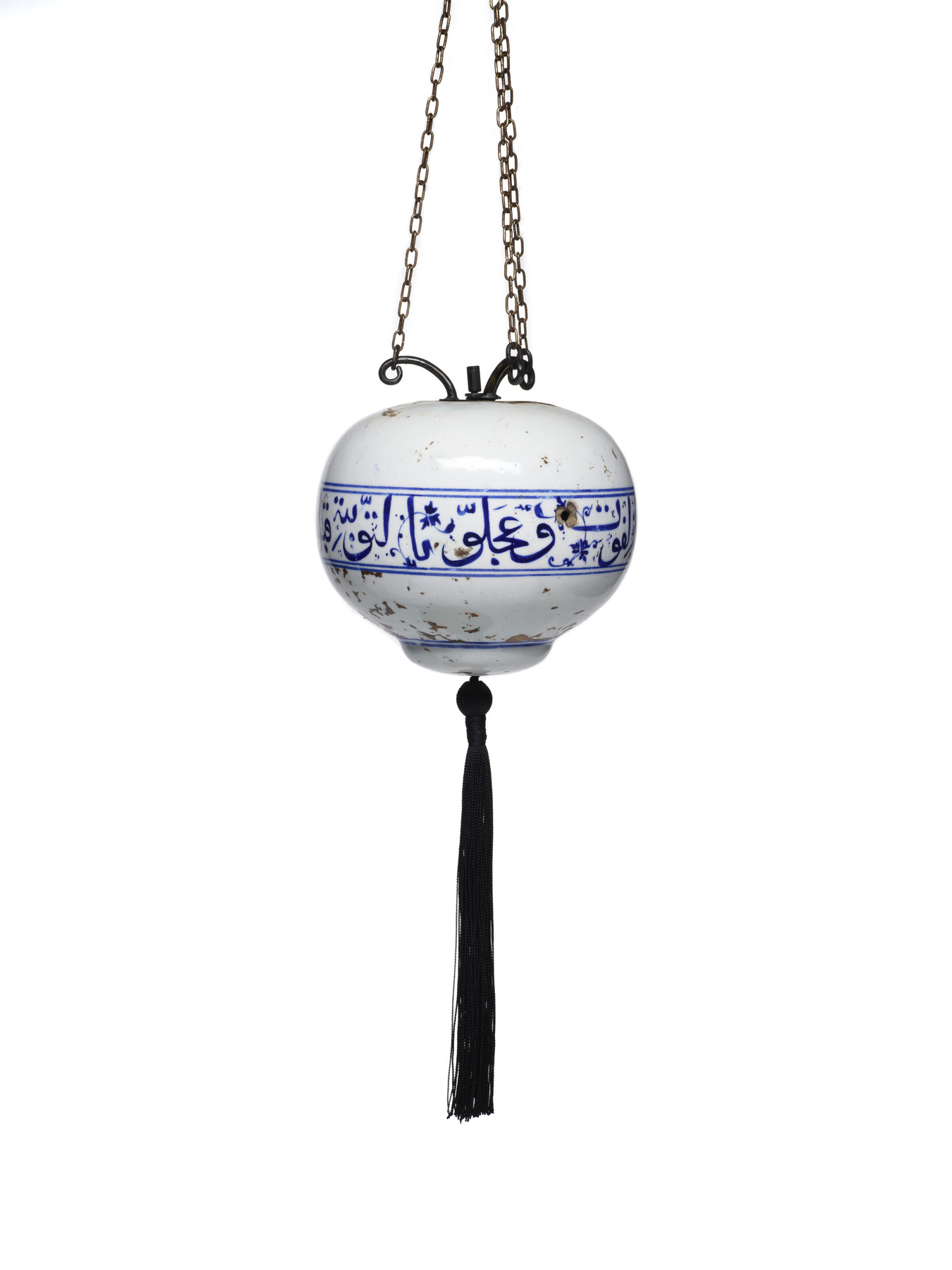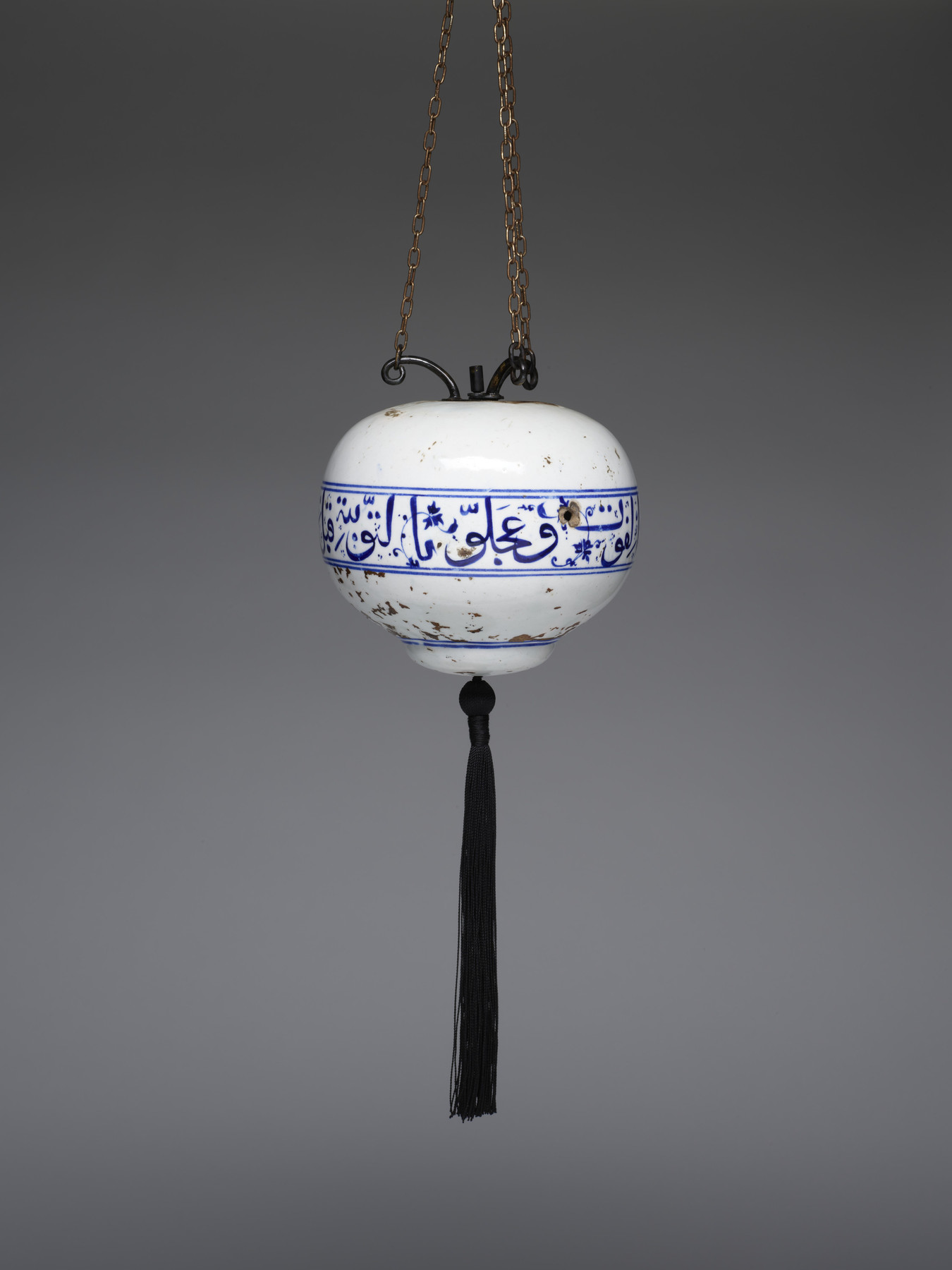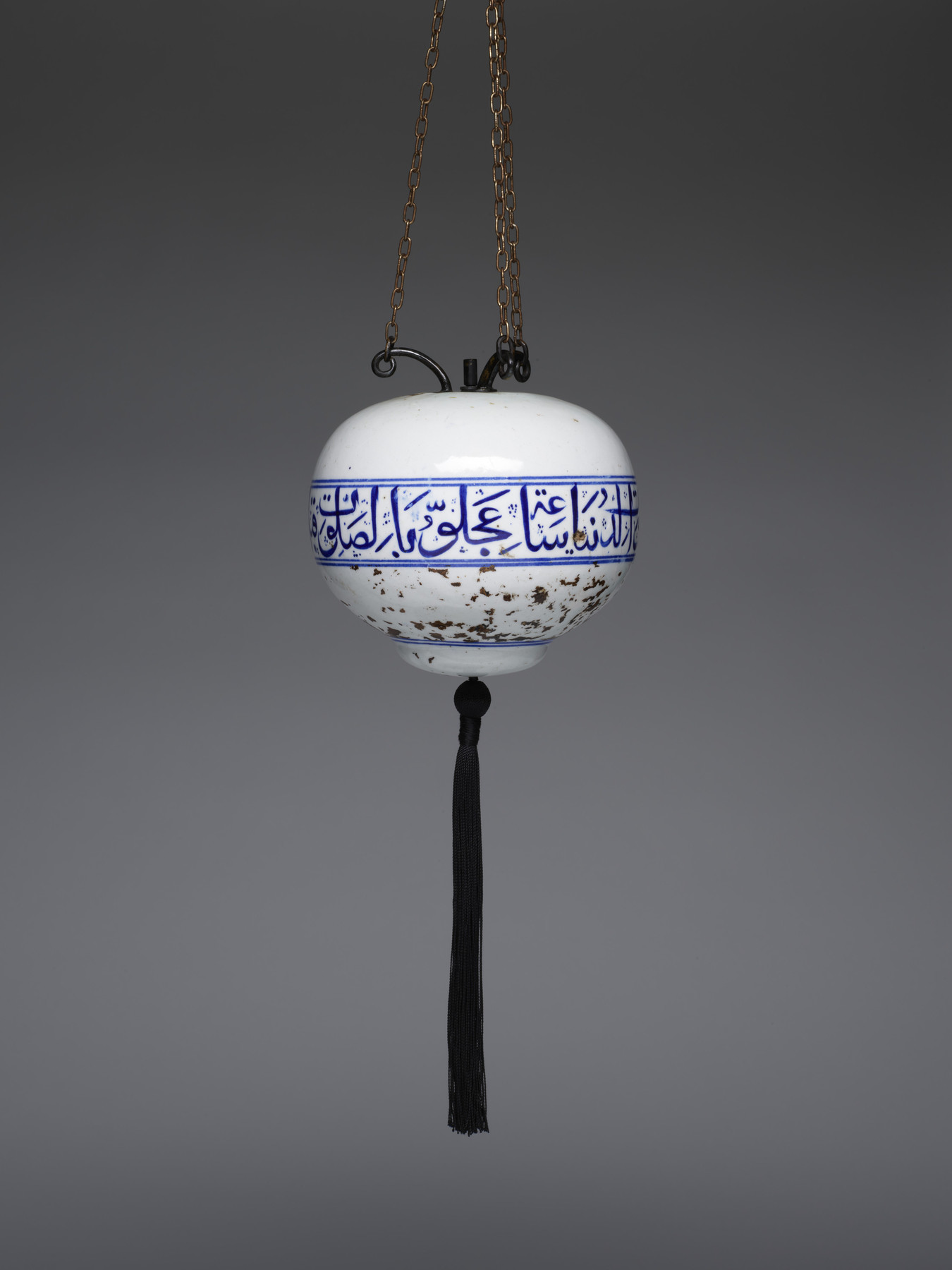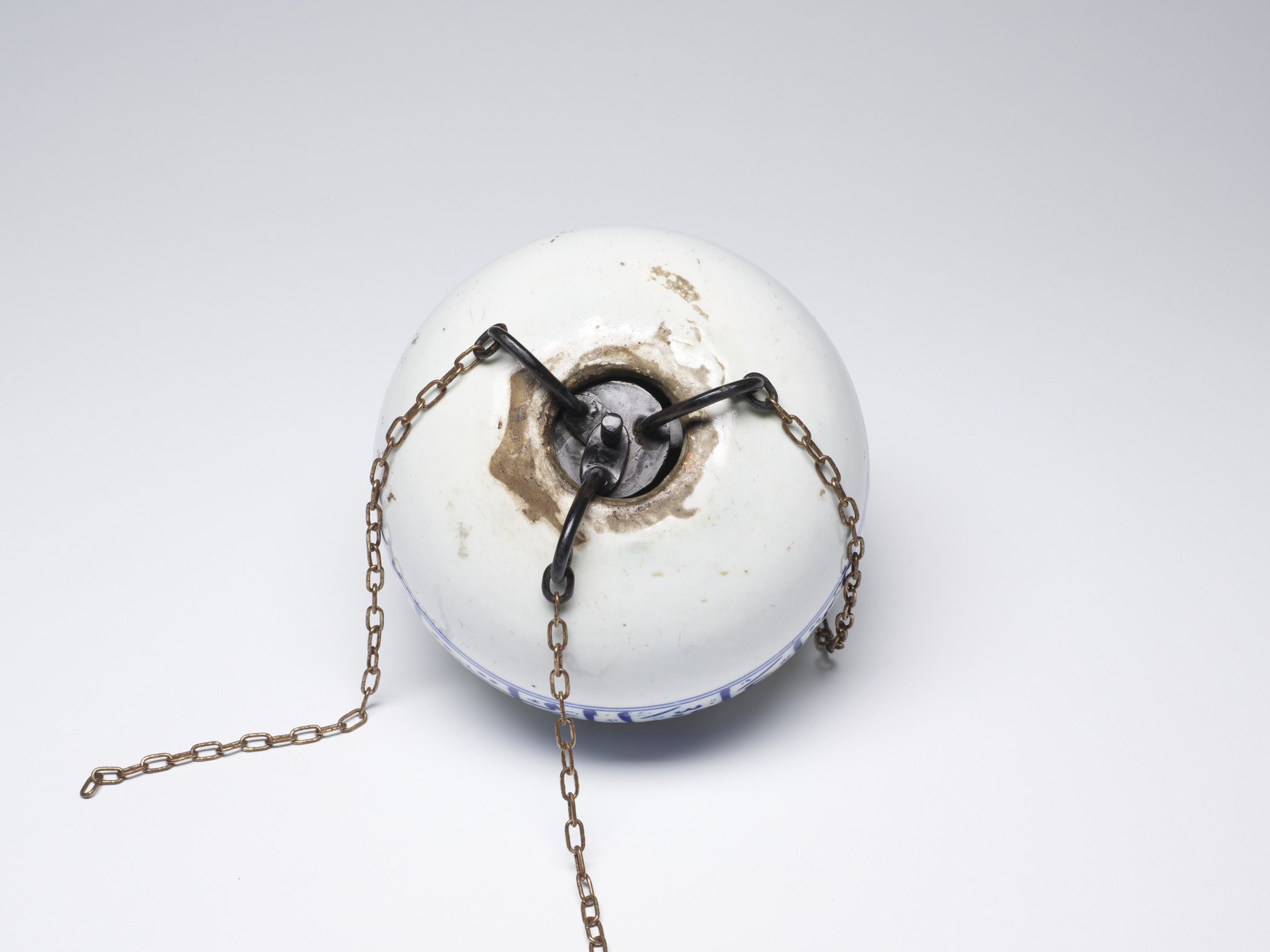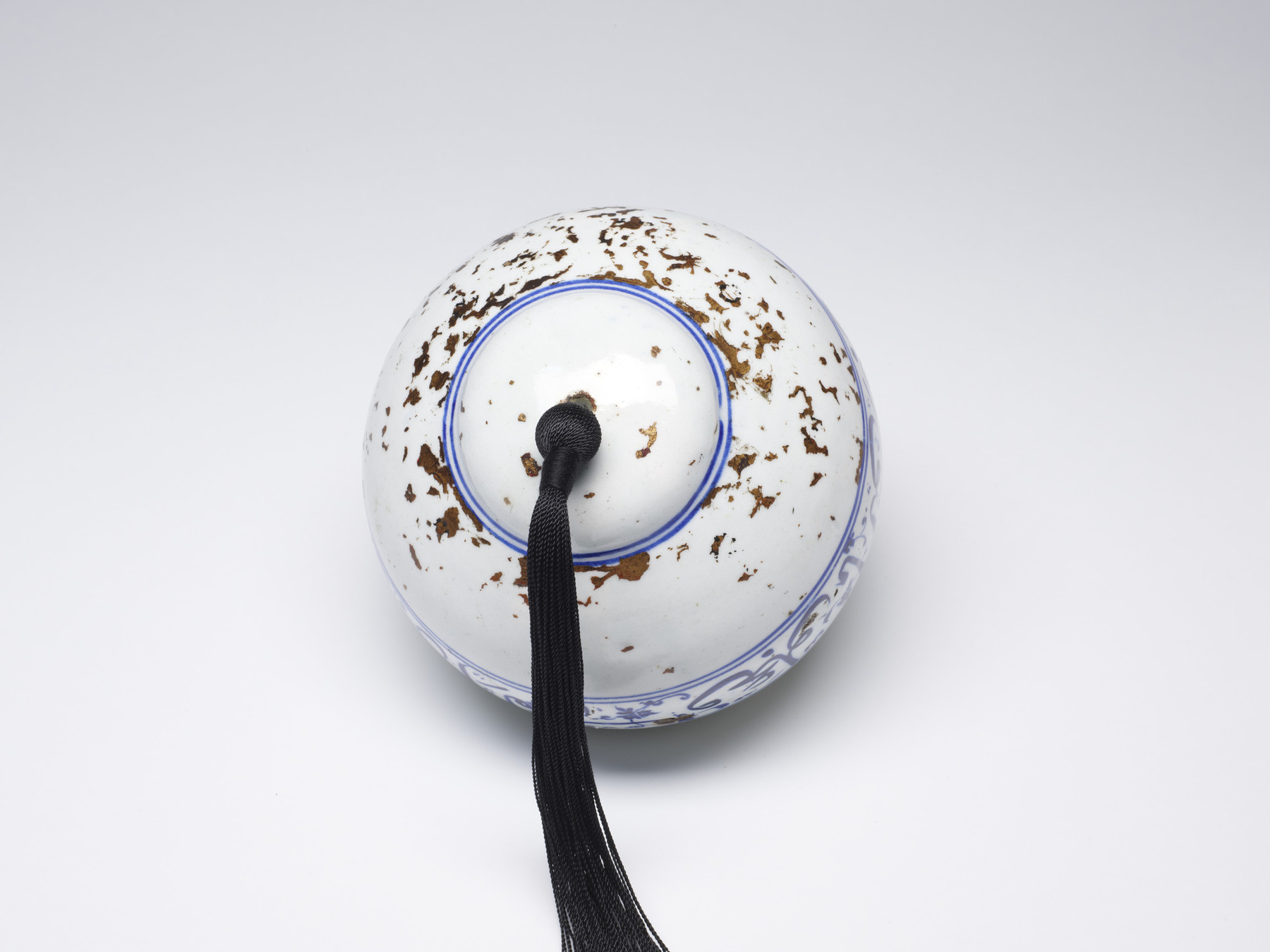Orb Ornament
(Islamic World )
This piece once hung with a lamp, possibly in either the mosque or mausoleum (tomb) of Sultan Selim I (d. 1517) in Istanbul. The inscription around the body of the sphere is a hadith, or saying attributed to the Prophet Muhammad: “The world is only one hour, so hasten to prayer before dying and hasten to repent before death.”
Islamic religious buildings traditionally were lit with glass lamps, generally called mosque lamps, that hung from chains. In 16th-century Turkey, it was common to make mosque lamps from glazed ceramic and to pair them with round or oval ornaments. Such ceramic pieces were of little use as lighting fixtures. They may have functioned, however, as acoustic devices, hung in groups to soften the echo of voices in the prayer hall. Mosque lamps were also symbols of divine light, and, therefore, of God's presence in the place of prayer, while the ornamental spheres symbolized the orb of heaven.
Inscription
Provenance
Provenance (from the French provenir, 'to come from/forth') is the chronology of the ownership, custody, or location of a historical object. Learn more about provenance at the Walters.
Henry Walters, Baltimore [date and mode of acquisition unknown]; Walters Art Museum, 1931, by bequest.
Exhibitions
| 1991 | The Here and the Hereafter: Images of Paradise in Islamic Art. Asia Society, New York; Bowdoin College Museum of Art, Brunswick; Hood Museum of Art, Hanover; University Art Gallery, University of California Berkeley, Berkeley; Springfield Museums, Springfield. |
Geographies
Turkey, Iznik
(Place of Origin)
Turkey, Istanbul (Place of Discovery)
Measurements
H: 5 1/8 x Diam: 5 15/16 in. (13 x 15.1 cm)
Credit Line
Acquired by Henry Walters
Accession Number
In libraries, galleries, museums, and archives, an accession number is a unique identifier assigned to each object in the collection.
In libraries, galleries, museums, and archives, an accession number is a unique identifier assigned to each object in the collection.
48.1022

